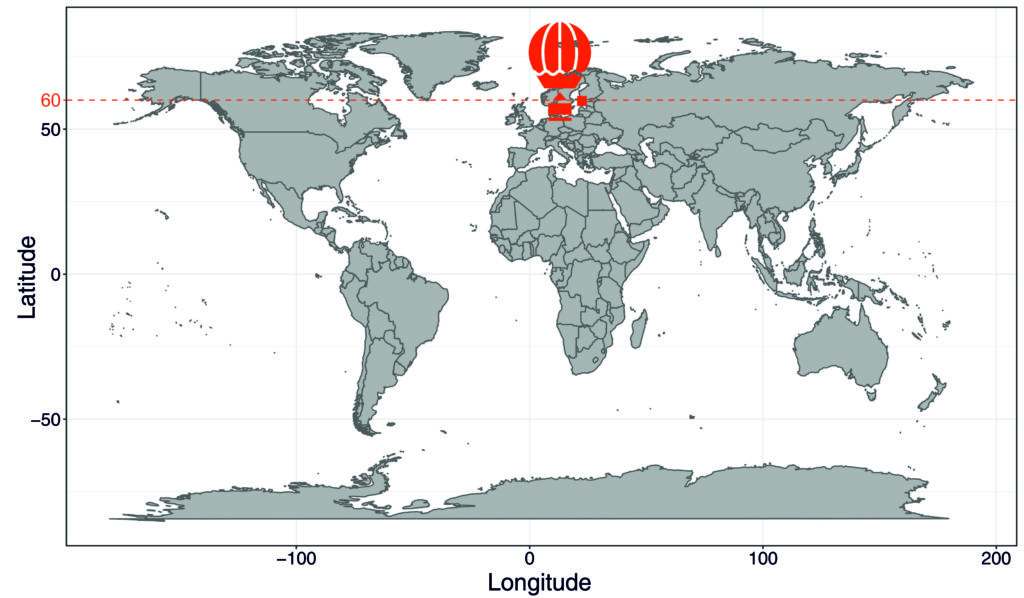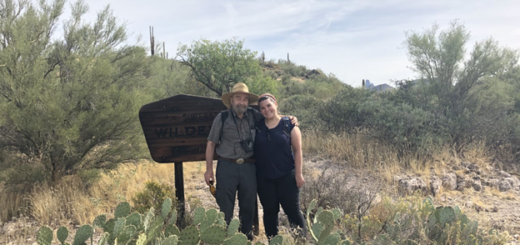The Latitude Project – 60° North – Finland
Myrmecological News Blog is launching The Latitude Project – by using latitudes to circle the globe, we collect impressions of the ants of the world in terms of their diversity, ecology, life history, and conservation biology. Starting with 60° North, we shine flashlights on the ants of every continent passed by interviewing one ant researcher per continent. Our first interview is with Riitta Savolainen in Finland, Europe.
An Interview by Florian M. Steiner

MNB: What are your GPS coordinates?
RS: The Tvärminne Zoological Station (59.84° N, 23.24° E) has been for many decades the center for ant research in Finland. It is located in the southernmost part of mainland Finland, the Hanko Peninsula by the Baltic Sea. Most of the 54 native ant species in Finland can be found on this Peninsula.
MNB: What are the annual mean temperature and the annual precipitation in your area?
RS: The mean annual temperature in the area since 1980 has been 6 °C and the annual precipitation circa 635 mm. The average temperature of July (the warmest month) is 17 °C.
MNB: Which ant subfamilies occur there?
RS: The subfamilies Formicinae and Myrmicinae.
MNB: What is a typical natural habitat in your area?
RS: The ground of the Hanko Peninsula is mainly moraine and fine sand, interspersed with rocky outcrops. The most common (“typical”) habitat is fairly open pine forest growing on moraine or sandy soil, with varyingly high and dense layer of shrubs. The forest is interspersed with smaller patches of deciduous forests, xerothermic sand dunes with occasional pines (Figs. 1, 2), bogs, and mesic meadows. On the islands, outside the zoological station, rocky outcrop with open pine forest dominates.
MNB: How many ant species typically occur in this habitat?
RS: When the different habitat types of the Hanko Peninsula are combined, at least 45 species have been found. Of these, about 40 occur in the mosaic of pine forests (typical of Finnish forests growing on moraine) and more open, sandy patches on old dunes (an exotic element in Finland). In these sand-dune patches, four of the few Finnish red-listed ant species are found: Anergates atratulus (CR, Critically Endangered), Myrmica constricta (CR), M. hirsuta (VU, Vulnerable), and Lasius meridionalis (EN, Endangered). On sunny summer days, the ground on the open dune patches may reach very high temperatures.
MNB: What is your favourite ant from your area, and what fascinates you most about it?
RS: My favourite ant (in Finland) is the inquiline social parasite of Myrmica rubra (Figs. 3, 4). Before being synonymised with its host, it was known as Myrmica microrubra Seifert, 1993. The inquiline behaves like a species and has a life history separate from its host. Different from the host, the inquiline has practically no own workforce and thus depends on the host for all colony tasks (Figs. 5, 6). The females of the inquiline are about the size of the host workers (Video 1). Recently, for practical reasons, Seifert (2018) returned to using the name M. microrubra as it seems to be a young species, though still in the process of speciation. Whatever the taxonomic status of the inquiline, it is a challenging and charming entity to study, which has more secrets to be revealed than already found. Still many aspects of the ecology, behavior, and genetics of the inquiline are unknown.
Click to enlarge pictures:

Fig. 3: Myrmica microrubra queen (© Arnstein Staverløkk) 
Fig. 4: Myrmica microrubra male. (© Arnstein Staverløkk) 
Fig. 5: Myrmica microrubra colony. Jeløy, Moss i Østfold. (© Arnstein Staverløkk) 
Fig. 6: Myrmica microrubra colony with alate gynes. Jeløy, Mossi Østfold. (© Arnstein Staverløkk)
Video 1: Myrmica
MNB: Where does your favourite ant species nest, and how many workers live in one nest, roughly?
RS: Myrmica
The colony size of M. rubra varies quite a bit. A single nest colony may contain about one thousand to 10,000 workers, perhaps many more, and often colonies form multi-nest systems where nest boundaries become blurred. Unlike in Denmark, supercolonies covering large areas have not been found in the Hanko Peninsula.

MNB: Do you know its mating strategy, how new nests are founded, and how many queens are in one nest?
RS: The host has mating swarms, but the inquiline seems to mate in the nest. Gynes of the inquiline are adopted in M. rubra nests (Seifert 2018).
MNB: What do workers feed on? What do they feed to larvae?
RS: Myrmica rubra is a scavenger and predator, but also attends aphids for honeydew. To my knowledge, the diet of the inquiline has not been studied. Presumably, the inquiline has a similar diet to that of its host, most likely being fed by the host.
MNB: Is the species territorial, and if so, how does it defend its territory?
RS: Myrmica rubra is an aggressive species which defends its nest and food resources. It easily excludes other ant species (and conspecifics) from experimental baits, perhaps entire nests nearby its own colony. In North America, where it is an invasive species, it has become a real pest and nuisance especially in gardens and parks. It is also called picnic ant (in addition to the name common red ant), because it commonly nests in meadows and lawns and, if its nests are disturbed, workers flow out quickly from the nest and readily sting anything around, including humans. The sting is painful, most painful of all the northern Myrmica species. As the inquiline has most of the time only gynes, they do not come out to defend the nest or food sources.
MNB: How common is your favourite ant, and is it threatened?
RS: Myrmica rubra is the most common and abundant Myrmica species in Europe and also in Finland, ranging to the Arctic Circle in the north, with a broad habitat amplitude. Its main habitats are birch forests and meadows (except very dry ones), roadsides and urban ruderal patches, parks and gardens. It is found in addition to the most typical habitats also on bogs and locally in spruce forests. The inquiline is found fairly easily in nests of M. rubra, practically wherever the number of nests close to each other is high.
References
Seifert, B. 2018: The ants of Central and North Europe. – lutra Verlags- und Vertriebsgesellschaft, Tauer, 408 pp.













Hello Riitta:
Enjoyable and interesting to read about Myrmica microrubra and the surprisingly rich ant fauna of such a northern locale. It has been a long time since we communicated, and I’m glad to read you are still in the fascinating business of ants.